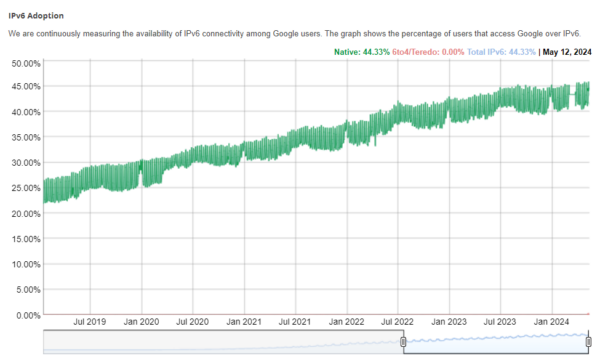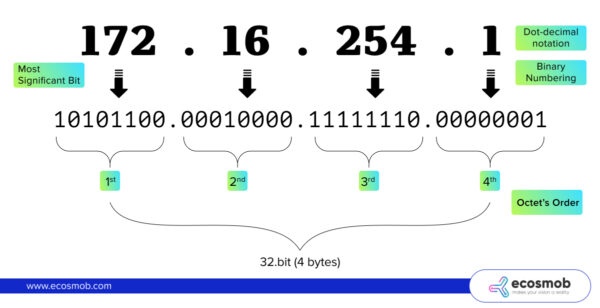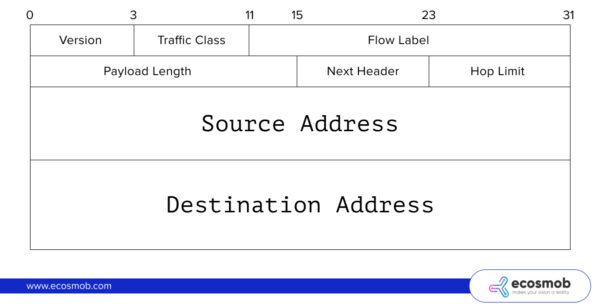IPv4 and IPv6 are foundational internet protocols with distinct differences in address format, scalability, and security. IPv6 addresses IPv4 limitations, supporting future internet growth.
When we think of the internet, we rarely consider the complex frameworks working behind the scenes. Yet, the very basis of online communication, including technologies like VoIP, relies on internet protocols, particularly IPv4 and IPv6. These are not just technical labels but fundamental components that determine how devices connect and communicate on the web. While IPv4 has been the foundation for decades, IPv6 is the modern successor that promises to support the ever-growing number of devices, data needs, and the increasing demand for high-quality VoIP services. Let’s dive deep into what sets these two apart and why IPv6 might be the future of the internet.
Ready for a Faster Internet? Learn How IPv6 is Changing the Game.
What are IPv4 and IPv6?
IPv4 (Internet Protocol Version 4) and IPv6 (Internet Protocol Version 6) are both addressing schemes that enable data packets to find their way across the vast networks of the internet. Just as a physical address tells you where to deliver a letter, an IP address guides data to the correct destination on the internet.
According to Google’s IPv6 adoption statistics, global IPv6 availability reached over 44.33% as of May 2024. However, as noted by Norkė, smaller population countries and networks currently find the switch to IPv6 less pressing, considering it less relevant for their immediate needs.

Source: IPv6 connectivity among Google users statistics (data by Google, May 2024)
IPv4 -The Backbone of IP Addressing
IPv4 has been in use since the 1980s and was the first protocol designed to identify devices on a network. It uses a 32-bit address format, which results in a maximum of about 4.3 billion unique addresses. Although it was substantial in the early days, it has proven to be limited as the number of internet-connected devices surged.
IPv6 – The Modern Successor
IPv6 was introduced to address the limitations of IPv4. With a 128-bit address format, IPv6 can support an astronomical number of unique addresses (around 340 undecillion). It provides ample room for future internet growth alongside added features to enhance security and efficiency.
What is the Difference between IPv4 and IPv6?
Understanding IPv4 and IPv6 involves recognizing key architectural, functionality, and feature distinctions. Let’s break down the difference between IPv4 and IPv6 in each significant area, along with insights into their roles in cloud migration.
-
Address Format: IPv4 vs IPv6 Address Structure
The structure of IP addresses in IPv4 and IPv6 fundamentally affects their capacity and appearance, shaping how each protocol handles internet traffic and device identification in unique ways.
- IPv4: With a straightforward 32-bit numeric sequence in decimal format, IPv4 addresses (e.g., 192.168.1.1) are composed of four octets separated by periods. Each octet ranges from 0 to 255, making it a familiar, readable structure but limited to around 4.3 billion unique addresses—a constraint in today’s connected world.
- IPv6: Featuring a more advanced 128-bit alphanumeric format, IPv6 addresses (e.g., 2001:0db8:85a3:0000:0000:8a2e:0370:7334) are divided by colons into eight groups of four hexadecimal characters. This expanded structure enables an astronomical number of unique addresses, positioning IPv6 as a scalable solution for the future’s expansive internet needs.
2. Subnetting: How IPv4 and IPv6 Handle Network Segmentation
Subnetting allows a network to be divided into smaller, manageable sub-networks, improving efficiency and organization. Both IPv4 and IPv6 handle subnetting differently to suit their architectures.
- IPv4 Subnetting: Subnet masks are used by IPv4 to isolate the network and host components of an address. It often requires manual configuration and adjustment to define boundaries, making IPv4 subnetting more labor-intensive but precise for smaller networks.
- IPv6 Subnetting: IPv6 adopts a more straightforward, prefix-based system that automatically segments addresses, making it easier to manage large networks. The prefixing in IPv6 facilitates automated subnetting, which minimizes manual configuration and improves scalability.
3. Address Exhaustion
As more devices connect to the internet, IPv4’s 4.3 billion address capacity has reached its limit. The shortage has led to network scalability and efficiency challenges, pushing the need for a more sustainable solution. IPv6 steps in with an expansive address range, supporting the growth of digital connectivity well into the future.
- The Finite Nature of IPv4: IPv4’s 32-bit structure limits it to about 4.3 billion unique addresses. With the rapid growth of connected devices, this pool has already been exhausted, even as techniques like Network Address Translation (NAT) try to extend its usability by allowing multiple devices to share a single IP address.
- IPv6’s Limitless Potential: IPv6 addresses this limitation with a 128-bit structure, supporting a virtually endless number of unique addresses — around 340 undecillion. This astronomical number ensures that IPv6 can scale to accommodate future growth in devices and networks for decades, if not centuries, making it a long-term solution to IPv4’s constraints.
4. Network Configuration: IPv4 vs IPv6 Autoconfiguration
Configuring networks involves assigning unique IP addresses to devices, a process that IPv4 and IPv6 handle differently. IPv6 introduces automation features that simplify configuration, enhancing network efficiency.
- IPv4 Configuration: IPv4 typically requires manual configuration or Dynamic Host Configuration Protocol (DHCP) to assign IP addresses. While DHCP automates part of this process, network administrators must often oversee and manage settings to ensure network stability and device connectivity.
- IPv6 Autoconfiguration: IPv6 introduces Stateless Address Autoconfiguration (SLAAC), enabling devices to automatically generate their IP addresses upon joining a network. This method eliminates the need for DHCP dependency, making IPv6 networks more flexible, scalable, and easier to manage in dynamic environments.
5. Security Considerations: IPv4 vs IPv6 in Modern Networking
Security is a critical factor when comparing IPv4 and IPv6. While engineers adapted IPv4 over time with added security measures, they designed IPv6 with built-in protections to meet modern security demands. Here’s a closer look at how each protocol approaches security:
- IPv4 Security: IPv4 depends mainly on external security layers like firewalls, Network Address Translation (NAT), and IPsec (Internet Protocol Security). These added layers help safeguard communications but can introduce complexity, as they weren’t initially part of IPv4’s design. As a result, IPv4 networks often require more intensive configuration and monitoring to maintain security.
- IPv6 Security: IPv6 incorporates IPsec as a standard feature, enabling encryption and authentication at the network layer for more secure data transmission. Although IPsec is only sometimes actively used in IPv6 deployments, its integration into the protocol framework means IPv6 has an inherent advantage in establishing secure, authenticated connections, more effectively meeting the needs of a modern, interconnected world.
6. Performance Comparison: IPv4 and IPv6 Efficiency
IPv6 optimizes performance with faster packet processing and simplified handling, offering significant improvements over IPv4 in network efficiency and speed.
- IPv6 packets: Packet Processing uses a simplified header structure, making packets more accessible and faster for routers to process. This streamlined approach reduces latency and boosts overall network performance, especially in high-traffic areas.
- IPv6 routers: Routers and sending devices can fragment packets, increasing router load and complexity. IPv6, however, assigns fragmentation solely to the sending device, reducing the workload on routers and creating a more efficient data flow across the network.
Comparison between IPv4 vs IPv6
Here is a difference between IPv4 and IPv6
| Feature | IPv4 | IPv6 |
| Address Size | 32-bit | 128-bit |
| Address Format | Decimal, separated by dots | Hexadecimal, separated by colons |
| Total Address Space | ~4.3 billion | 340 undecillion |
| Configuration | Manual/DHCP | SLAAC and DHCPv6 |
| Subnetting | Requires subnet masks | Prefix-based |
| Security | IPsec optional | IPsec built-in |
| Network Efficiency | Complex headers | Simplified headers |
| NAT Requirement | Often required | Not needed |
| Address Representation | A.B.C.D (e.g., 192.168.1.1) | XXXX:XXXX:XXXX:XXXX:XXXX:XXXX:XXXX |
| (e.g., 2001:0db8:85a3:0000:0000:8a2e:0370:7334) | ||
| Header Complexity | 20-60 bytes | 40 bytes |
| Broadcast Support | Yes | No (uses multicast instead) |
| Address Allocation | Manual, Classful, CIDR | Stateless Address Autoconfiguration (SLAAC), Hierarchical |
| Fragmentation | Routers and hosts can fragment packets | Only the sending host can fragment packets |
| Mobility | Limited support | Built-in support for mobile devices |
| Multicast | Limited multicast support | Improved multicast support |
| Configuration Methods | Static, DHCP | SLAAC, DHCPv6 |
| Quality of Service (QoS) | Limited QoS support | Improved QoS features |
| IPv4 Address Exhaustion | Exhausted | Vastly abundant |
| IP Address Types | Unicast, Broadcast, Multicast | Unicast, Multicast, Anycast |
| DNS Support | IPv4-specific DNS records | Supports AAAA records for IPv6 |
| Transition Mechanisms | N/A | Dual Stack, Tunneling (6to4, Teredo) |
| Network Address Translation (NAT) | Widely used | Not typically used |
| Operational Protocols | ARP for address resolution | NDP (Neighbor Discovery Protocol) |
IPv4 vs IPv6 in Practice: Where Are We Now?
The majority of significant ISPs, data centers, and IT organizations are currently implementing IPv6 as part of the continuing shift from IPv4 to IPv6. However, because of legacy devices and network configurations that still rely on IPv4, IPv4 is still widely used and will continue to cohabit alongside IPv6 for a while. As the Internet of Things (IoT) continues to grow, its impact on technologies like VoIP becomes increasingly apparent. The seamless connectivity enabled by IoT devices beneficially impacts VoIP and its future use, especially as networks transition to IPv6.
How does IPv6 simplify network configuration in comparison to IPv4?
IPv6 addresses many of IPv4’s limitations, positioning itself as the future-proof solution for Internet protocol. Here are some core advantages of IPv6 that make it an essential upgrade.
- Scalability: IPv6 offers an astronomical range of unique addresses, providing nearly limitless scalability as more devices connect to the internet. This vast capacity ensures IPv6 will support future growth, from IoT expansions to an increasingly digital world.
- Simplified Configuration: IPv6 introduces Stateless Address Autoconfiguration (SLAAC) and prefix-based subnetting, automating and simplifying network setup. These features reduce manual configuration and streamline network management, enhancing flexibility and ease of use.
- Enhanced Security: IPv6 was designed with security in mind, integrating IPsec for encryption and authentication as a standard feature. While the use of IPsec can vary, its inclusion in IPv6 enables more secure communication protocols at the network level than IPv4.
- Improved Network Performance: IPv6 reduces network latency through simplified packet headers and a decreased reliance on Network Address Translation (NAT). By eliminating some of IPv4’s performance bottlenecks, IPv6 improves data flow and optimizes network speed and efficiency, making it ideal for high-demand applications.
As the internet expands, IPv6 stands ready to meet the demands of a digital world where connectivity is constant and devices are ever-increasing. With its virtually limitless address space, streamlined configuration, built-in security features, and enhanced performance, IPv6 offers a robust and future-ready solution that addresses IPv4’s limitations. While IPv4 remains widely used, especially in legacy systems, transitioning to IPv6 is essential for scalability and innovation in modern networks. Embracing IPv6 prepares networks for the future and provides immediate benefits in security, efficiency, and network management, marking it as the next evolutionary step in internet technology.
Overcoming the Ongoing Challenge of Transitioning from IPv4 to IPv6
Despite the numerous advantages of IPv6, the transition from IPv4 remains a significant challenge for many organizations. Compatibility with legacy systems, extensive modifications required for infrastructure, and varying global adoption rates complicate the shift. As the demand for internet connectivity continues to grow, the limitations of IPv4 will increasingly drive the need for a more robust and scalable IPv6 framework. Overcoming VoIP network issues with NAT traversal and ensuring seamless communication remains a key focus for the industry.
- Widespread Use of IPv4: Despite IPv6’s advantages, IPv4 remains dominant due to compatibility with older systems and devices.
- Infrastructure Dependency: Many organizations have built their networks on IPv4, challenging the complete transition to IPv6. Transition requires extensive modifications, including costly hardware upgrades and changes to network architecture.
- Complex Transition: The shift can be time-consuming and complex, especially for large networks reliant on IPv4 systems.
- Adoption of Dual-Stack Architecture: Most modern networks use a dual-stack architecture, supporting IPv4 and IPv6. It allows simultaneous uPv4 and IPv6, enabling IPv6 traffic while accommodating legacy IPv4 devices.
- Maintaining Compatibility: Dual-stack architecture helps bridge the gap and ensures essential communication is uninterrupted during the transition.
- Varying Global Adoption Rates: Different regions and industries adopt IPv6 at different rates. Factors influencing adoption include IP address scarcity and future scalability needs.
- Future Needs vs. Immediate Priority: Areas with established IPv4 infrastructures may view IPv6 as a future necessity rather than an immediate concern.
- Long-Term Transition: As more devices come online and internet connectivity demand grows, IPv4’s limitations are expected to drive a broader transition to IPv6.
As global adoption rates vary, the necessity for IPv6 will become increasingly pressing, particularly as the limitations of IPv4 become more pronounced. The future of internet connectivity hinges on overcoming these challenges, ensuring that the transition to IPv6 enhances network capabilities and supports the ever-growing demand for reliable and efficient communication.
Embracing IPv6 While Supporting IPv4 in Modern Networks
IPv6 undoubtedly represents the future of IP addressing, bringing scalability, enhanced security, and improved efficiency to modern networks. However, IPv4 remains highly relevant, especially as many systems and regions still rely on it. The transition is gradual, with a dual-stack approach allowing networks to leverage IPv4 and IPv6.
For companies navigating this shift, like Ecosmob Technologies, which specializes in customized VoIP solutions, Unified Communications, and advanced IP networking, understanding the intricacies of both protocols is essential. Ecosmob’s expertise enables businesses to seamlessly integrate IPv6 while maintaining compatibility with IPv4, ensuring that communication systems are both future-proof and robust. Ecosmob’s solutions facilitate this dual-stack approach, offering clients the flexibility to harness IPv6’s benefits without sacrificing the stability and familiarity of IPv4. Partnering with experts like Ecosmob Technologies as the digital system grows can make the transition smooth, secure, and strategically aligned with future technology advancements.
Upgrade Your Knowledge and Discover Why IPv6 is 85% More Efficient!
FAQs
Why is IPv6 necessary when we already have IPv4?
IPv4 has a limited address space, with around 4.3 billion unique addresses, which needs to be increased for the growing number of internet-connected devices. IPv6, with its 128-bit address format, provides virtually unlimited addresses, ensuring scalability for future internet growth.
Can IPv4 and IPv6 coexist on the same network?
Yes, most networks today use a “dual-stack” approach, allowing devices to operate with IPv4 and IPv6. This setup enables a smoother transition and maintains compatibility with devices and networks that still rely on IPv4.
What are the main advantages of IPv6 over IPv4?
IPv6 offers several benefits, including a larger address space, simplified network configuration, built-in security features (like IPsec), and improved network efficiency due to simplified packet headers.
Will IPv4 eventually be completely replaced by IPv6?
While IPv6 adoption is growing, IPv4 will likely be around for a while due to widespread legacy systems. Dual-stack networks will likely remain used for many years, supporting IPv4 and IPv6 to ensure compatibility.
How can businesses be ready for the transition from IPv4 to IPv6?
Businesses can prepare for the transition by adopting a dual-stack approach, ensuring network hardware and software are IPv6-compatible, and training IT teams on IPv6 configurations. It’s also essential to assess network infrastructure and work with technology providers who offer solutions supporting both IPv4 and IPv6.




